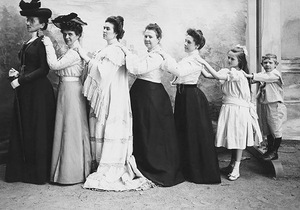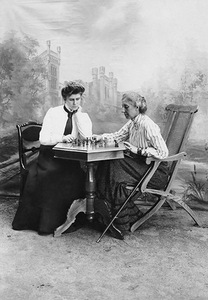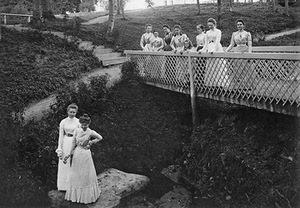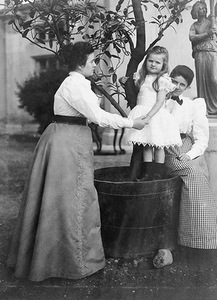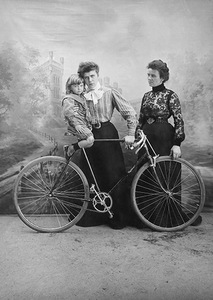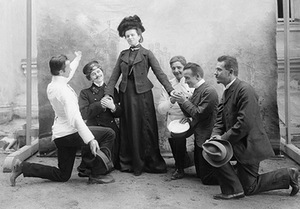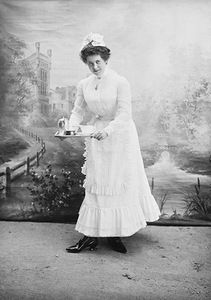Count S. K. Kosakovskis' legacy: modern look from the past 0
In brief: Everyday flowers: women's and children's portraits from Count Kazimieras Kosakovskis' photography collection is the name of the exhibition at the National M. K Čiurlionis Art Museum, open until the 6th of March. Upon its opening earlier this year, exhibition could not accommodate all the visitors in a small hall, many of them waited in line, in the corridor, for their turn to get a closer look at the Count's photo albums, registration book, some enlarged photographs and to read the detailed descriptions.
Many people were attracted not only by the invitation to the exhibition, but also by the presentation of the monograph Vaitkuškis: Count Stanislovas Kazimieras Kosakovskis (1837–1905) and the amateur photography of the 19th century. The book and the exhibition were presented by the author and curator, art historian Dr. Jolita Mulevičiūtė and the director of the museum Osvadas Daugelis as well as the great-grandchild of the Count Pawel Szanajca-Kossakowski with his wife Anira Wojan (they both are heads of Jan Eustachy Kossakowski Foundation).
The author confessed about two things that she feared the most - the lack of knowledge of the old photography and the different name spelling, which was determined by the formation of new society back then. What used to be "self-evident" and unrecorded, now opened up as blank pages of the book.
The first part of the exhibition - albums - is only a small part of S. K. Kosakovskis’ work: from 65 albums guarded at the museum, the exhibition was limited to 7 opened albums under the glass, yet hoping that the viewer will take a close look at that small fragment and will see how the photographs were glued together, that they are not isolated individual pictures and images that could be put on walls.
Curator of the exhibition immediately claimed responsibility for the second part as well - digital, enlarged prints made from original photographs, because they might "displease some of the old photography specialists." But Count S. K. Kosakovskis himself liked to "play with formats", although in the albums presented at the exhibition we see the standard format photographs, but J. Mulevičiūtė presents the evidence - one of the photographs capturing large format photographs arranged in the Count's office.
This exhibition did not have a separate budget and as the organizers said, it happened because of the painstaking work and enthusiasm of the museum employees. Only, it would be very appropriate if the chamber exposition would have had at least one copy of the monograph. It would serve as a broader guide to the Count's photographic worlds.








